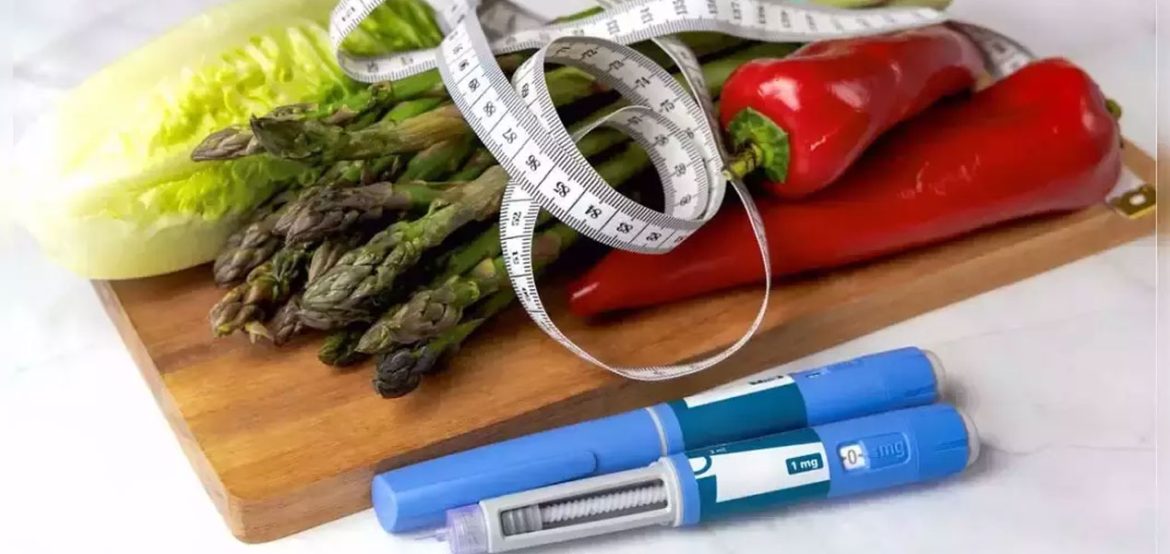- GLP-1 Medications and Natural Alternatives: GLP-1 agonists like Ozempic reduce “food noise” by regulating hunger hormones and digestion but come with side effects like nausea and muscle loss. Natural methods, such as consuming high-fiber foods, healthy fats, and lean proteins, can mimic these effects at a lower cost and with fewer risks.
- Lifestyle Adjustments to Curb Hunger: Strategies like eating balanced meals, intuitive eating, managing stress, regular exercise, and quality sleep can naturally reduce food cravings and improve appetite control without medication.
- Long-Term Benefits of Dietary Changes: Incorporating GLP-1-boosting foods (e.g., soluble fiber, polyphenol-rich foods, and healthy fats) supports sustainable weight loss, improved glucose control, and reduced reliance on ultra-processed foods.
Currently, Pakistanis and hundreds of thousands around the world are dealing with a thing called ‘Food Noise’. Food noise refers to persistent, often intrusive thoughts about food, even when you’re not hungry. While not a clinical term, it describes the mental chatter that can lead to overeating or constant cravings. However, everyone is now moving towards the use of Ozempic (GLP1 medication) to lose weight.
How GLP-1 Medications Like Ozempic Help
Glucagon-like peptide-1 (GLP-1) agonists, including Ozempic, Mounjaro, and Wegovy, are popular for suppressing appetite, promoting fullness, and supporting weight loss. These drugs mimic the effects of GLP-1, a gut hormone that:
- Slows digestion
- Enhances insulin secretion
- Reduces sugar production in the liver
- Lowers appetite and food cravings
However, GLP-1 medications come with challenges like high costs and side effects, including nausea and muscle loss. Moreover, long-term use is often required to maintain results.
6 Foods That Can Mimic the Effect of Ozempic
- Avocado
- Chia seeds
- Oats
- Legumes
- Eggs
- Nuts
Read More:
5 Signs of High Cortisol in Women
Boosting GLP-1 Naturally Through Diet
Instead of relying on medications like Ozempic, you can also stimulate your body’s natural GLP-1 production by adopting specific dietary habits.
1. Load Up on Soluble Fiber
Soluble fiber dissolves in water, forming a gel-like substance in the gut. This not only slows digestion but also stimulates GLP-1 production through fermentation by gut bacteria.
- Sources: Oats, black beans, chickpeas, apricots, broccoli, and Brussels sprouts.
- Additional Benefits: Reduces cholesterol, stabilizes blood sugar, and supports heart health.
2. Prioritize Protein Intake
Protein is highly satiating and promotes GLP-1 secretion by interacting with receptors on gut cells.
- Plant-Based Options: Lentils, edamame, nuts, and seeds.
- Animal-Based Options: Eggs, chicken, fish, and lean beef.
For weight management, aim for 0.8–1 gram of protein per kilogram of body weight daily.
3. Incorporate Healthy Fats
Healthy fats, especially monounsaturated and polyunsaturated types, are powerful GLP-1 stimulators.
- Monounsaturated Fats: Olive oil, avocados, almonds.
- Polyunsaturated Fats: Salmon, walnuts, and tofu.
These fats also improve cholesterol levels and reduce inflammation.
4. Opt for Polyphenol-Rich Foods
Polyphenols enhance GLP-1 secretion directly or indirectly through gut microbiota.
- Best Sources: Green tea, spinach, berries, coffee, and apples.
- Added Benefits: Better lipid profiles, reduced insulin resistance, and anti-inflammatory effects.
Beyond Food: Lifestyle Hacks to Reduce Food Noise
Natural methods to control hunger and reduce cravings go beyond diet.
1. Avoid Extreme Diets
Overly restrictive diets often backfire by increasing cravings. Instead, focus on balanced meals that include proteins, fats, and carbs.
2. Stay Active
Exercise can suppress appetite by reducing hunger hormones and boosting fullness hormones. Vigorous activity may also improve stress-related cravings.
3. Manage Stress
Stress triggers unhealthy eating patterns. Mindfulness practices, deep breathing, or a short walk can help reduce its impact on hunger cues.
4. Prioritize Sleep
Sleep deprivation disrupts hunger hormones, leading to increased calorie consumption. Aim for 7–9 hours of sleep each night and establish a calming bedtime routine.
The Long-Term Benefits of Natural GLP-1 Boosters
Incorporating GLP-1-stimulating foods into your diet not only mimics some effects of Ozempic but also supports sustainable weight loss and better overall health. By replacing ultra-processed snacks with fiber- and protein-rich options, you can create lasting habits that reduce cravings and improve metabolic health.
Takeaway: While medications like Ozempic are effective for managing food noise, natural alternatives can provide long-term benefits without the costs or side effects. By adopting a “food as medicine” approach, you can reduce hunger, improve your health, and achieve sustainable weight management.
Stay tuned to WOW360.
